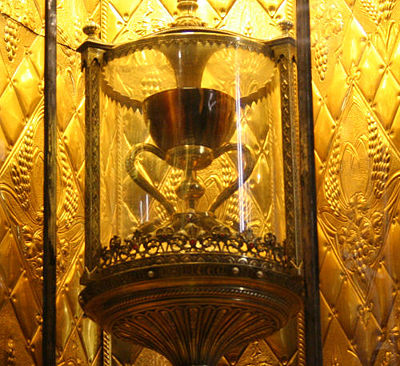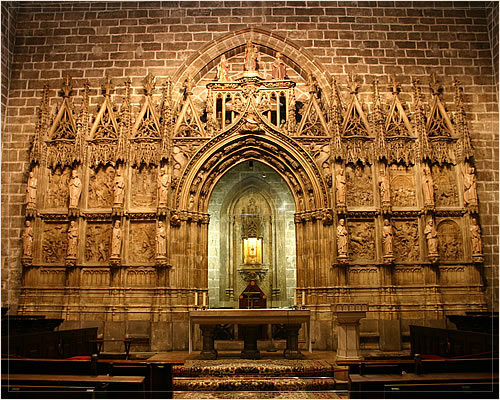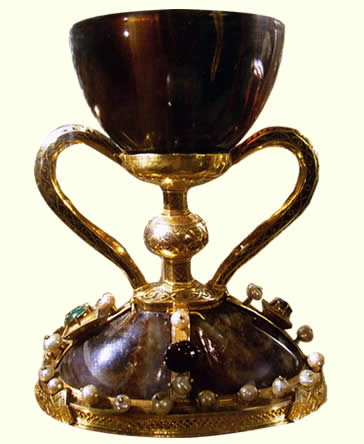 The quest to find the Holy Grail has made its way from religion to literary fiction and even on to the big screen numerous times. But did you know the real Holy Grail – the cup believed to have been used by Jesus Christ at the last supper – is housed in its own chapel at Valencia Cathedral?
The quest to find the Holy Grail has made its way from religion to literary fiction and even on to the big screen numerous times. But did you know the real Holy Grail – the cup believed to have been used by Jesus Christ at the last supper – is housed in its own chapel at Valencia Cathedral?
The oriental agate chalice is nestled in a cove in the wall of the chapel, a focal point for prayer and for the people who have used this chapel for theology lectures since the 15th Century. It is the only cup to have been recognised by the Vatican as the potential Holy Grail and so pilgrims, tourists, historians file in to the church to see it for themselves.
The Holy Chalice of Valencia arouses feelings of admiration and scepticism at the same time. The visitor feels captivated by the beauty of the Grail, its perfect and exceptional shape, the details in gold, the pearls and the precious gems. The observer comes with the mind full of legends, films, even warned by the novels and pseudo-scientific literature of “Grail-like” themes. But also with scepticism:
Is this Chalice of medieval appearance the grail of the Last Supper? Why is it in Valencia? Or is it maybe one of the many supposed Grails? Why isn't it so famous like the Shroud of Turin or the Tunic of Treveris?
Indeed, the relic is the upper part, which is a cup of dark brown agate finely polished. It is an “Alexandrian vessel” that archaeologists believe it to have an oriental origin (100 - 50 BC). This is the conclusion of Professor Antonio Beltrán, published in 1960 under the name of “El Santo Cáliz de la Catedral de Valencia” (“The Holy Chalice of the Valencia Cathedral”). It was never refuted and is the base of the increasing respect and knowledge of the Holy Chalice.
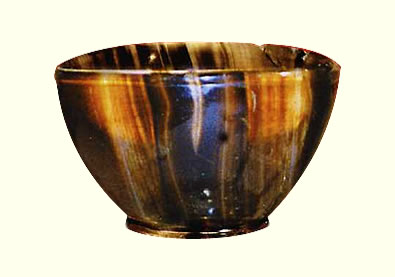
The handles came later as well as the chalice's stem made of exquisitely engraved gold. Its alabaster base of Islamic art is different from the vessel. All of it, together with the jewels decorating the stem belong to the medieval period. It is 17 cm. high and 9 cm. wide, and the elliptical base measures 14,5 x 9,7 cm.
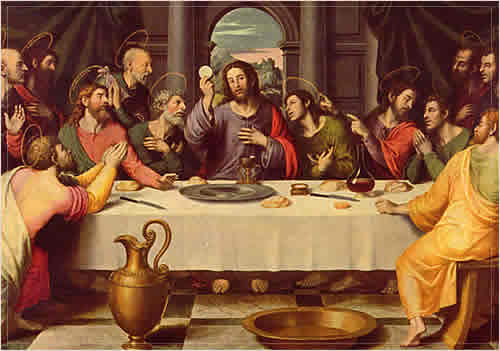
Venice and other places keep chalices with semiprecious stones of Byzantine origin. In Spain there are similar replicas (11th and 12th century) but they are liturgical cups, wrapped in gold and silver with an interior side in metal. However, the goldsmiths emphasized the vessel, without adornment, but with big handles so as to take it without touching the valuable and delicate chalice of translucent stone.
The tradition claims that it is the same cup that was used by the Lord in the last Supper for the Eucharist, then was taken to Rome by Saint Peter and was kept by the following Popes up to Saint Sixtus II. Through his Spanish deacon, Saint Lawrence, Saint Sixtus II was sent to Huesca (Saint Lawrence's homeland) in the 3rd century so as to save him from the persecution of Emperor Valerian. The presence of the Holy Chalice in Rome is evidenced by the phrase in the Roman Canon previously mentioned: “He took this glorious chalice” hoc praeclarum calicem, venerated expression that is not found in other old anaphoras and we cannot forget that the Roman Eucharistic prayer is the Latin translation from another Greek language, since this was the language of the Church of Rome till Pope Saint Damasus in the 5th century.
During the Muslim invasion, since 713 AD, the chalice was hidden in the Pyrenees region, after having been in Yebra, Siresa, Santa María de Sasabe (today San Adrián), Bailio and finally in the monastery of San Juan de la Peña (Huesca), where a document (1071) refers to a precious chalice made of stone.
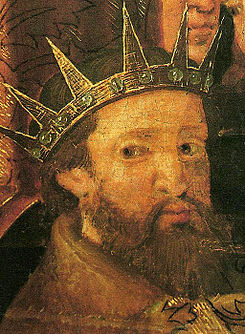 The relic was handed over in 1399 to the King of Aragon, Martin “The Human” who kept it in the Aljaferia Royal Palace of Saragossa and then in the Royal Palace of Barcelona in 1410 when he died. The Holy Chalice is mentioned in the inventory of his properties (Manuscript 136 of Martin “The Human”. Archive of the Aragon Crown. Barcelona, where the history of the sacred cup is described). Towards 1424, the second successor of Martín, King Alfonso the Magnanimous handed over the royal reliquary to the Valencia Palace. Because of his stay in Naples, it was given with the rest of the relics to the Valencia Cathedral in 1437 (Volume 3.532, fol. 36, v. Cathedral's Archive).
The relic was handed over in 1399 to the King of Aragon, Martin “The Human” who kept it in the Aljaferia Royal Palace of Saragossa and then in the Royal Palace of Barcelona in 1410 when he died. The Holy Chalice is mentioned in the inventory of his properties (Manuscript 136 of Martin “The Human”. Archive of the Aragon Crown. Barcelona, where the history of the sacred cup is described). Towards 1424, the second successor of Martín, King Alfonso the Magnanimous handed over the royal reliquary to the Valencia Palace. Because of his stay in Naples, it was given with the rest of the relics to the Valencia Cathedral in 1437 (Volume 3.532, fol. 36, v. Cathedral's Archive).
It was kept and venerated during many centuries among the relics of the Cathedral and it was used to keep the consecrated form in the float of the Holy Thursday up to the 18th century. During the Independence War, between 1809 and 1813, the chalice was taken to Alicante, Ibiza and Palma de Mallorca, escaping from Napoleonic invaders. In 1916, it was finally housed in the old Chapter House, later called the Holy Chalice Chapel. This continual public exhibition of the sacred relic resulted in a world-wide knowledge of its existence, since there was little information about it while it was kept in the reliquary of the Cathedral.
During the Civil War (1936-1939), it was hidden in Carlet. Pope John XXIII granted plenary indulgence on the day of its annual feast;
Pope John Paul II celebrated the Eucharist with the Holy Chalice during his visit to Valencia on 8 November 1982 just as Pope Benedict XVI did when he visited Valencia on 8 July.
Here it is today:
